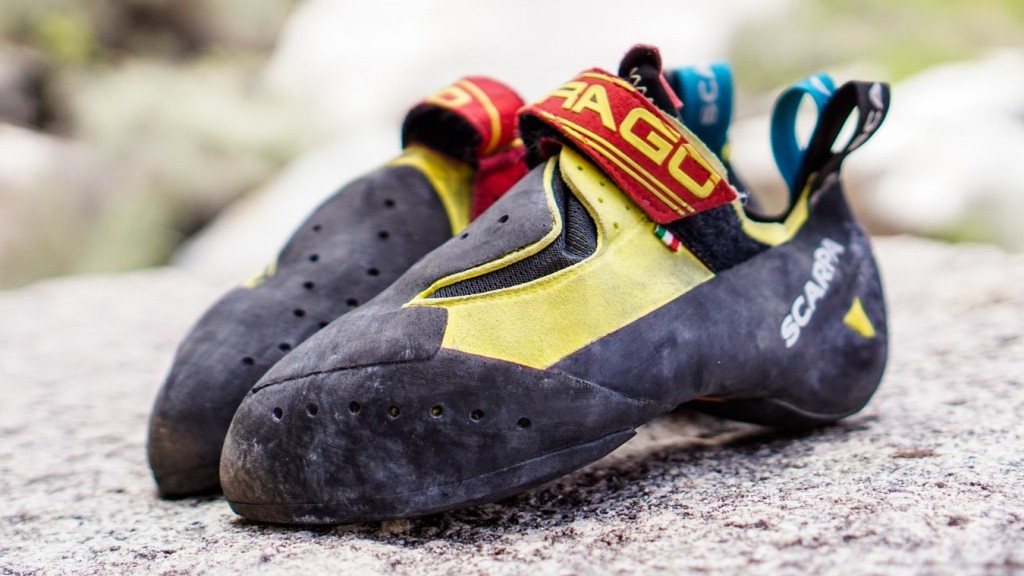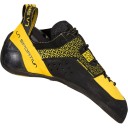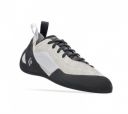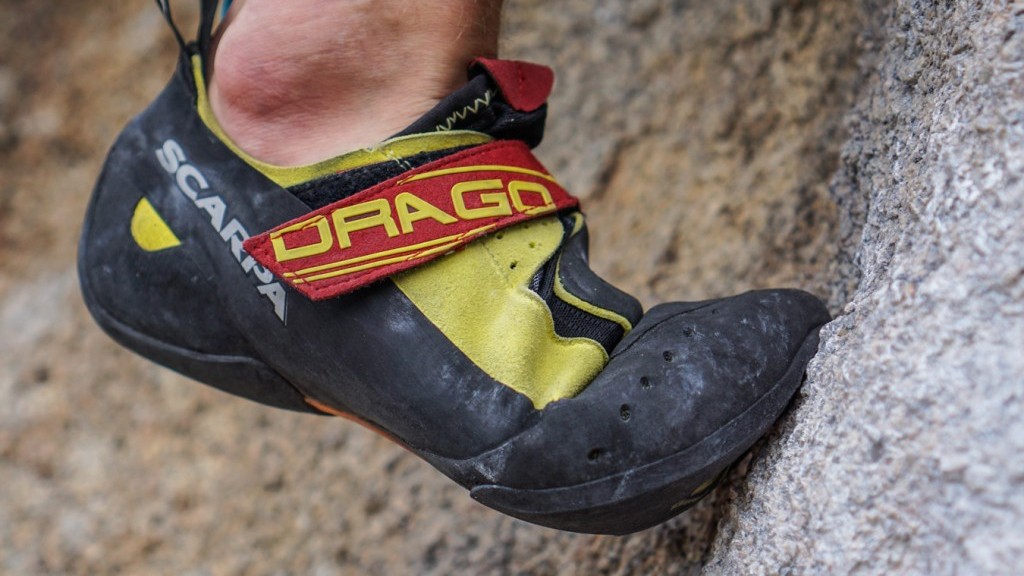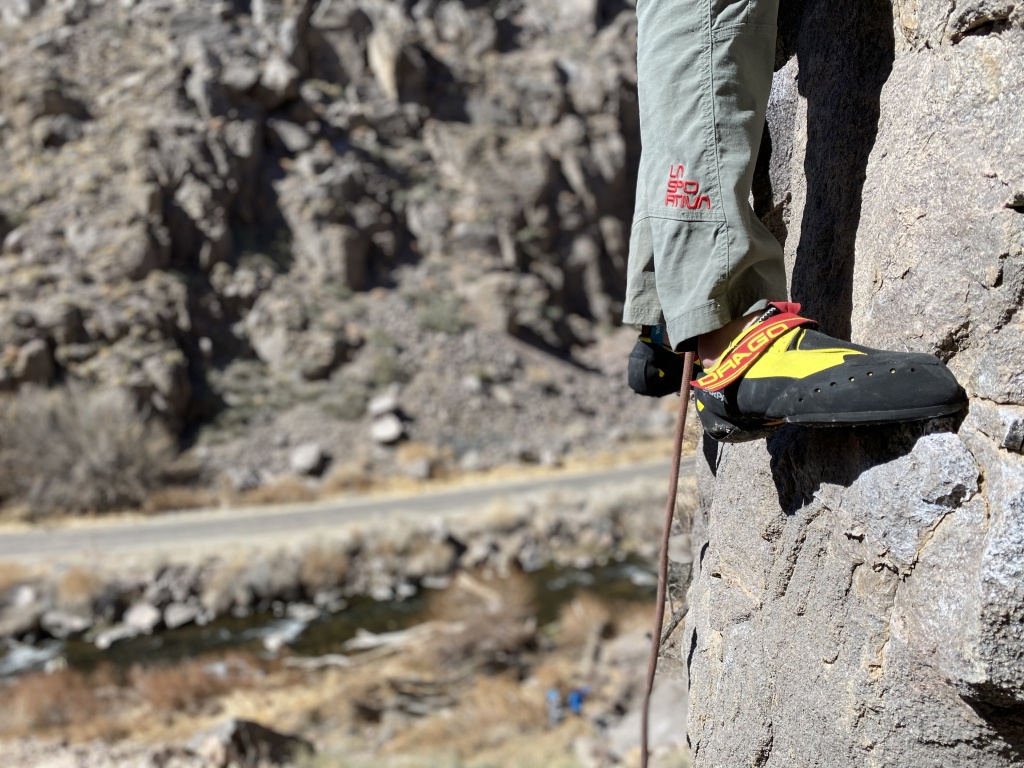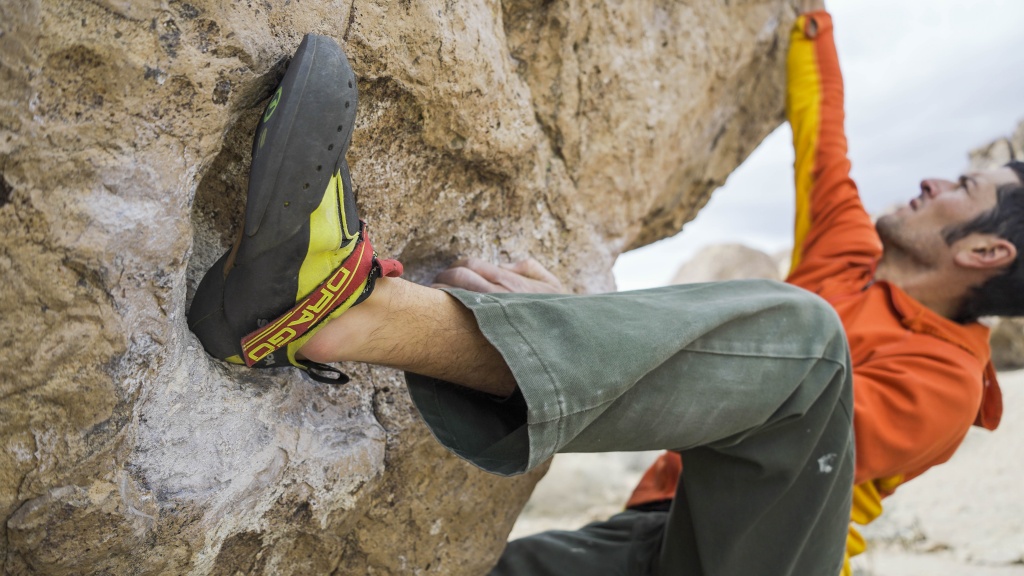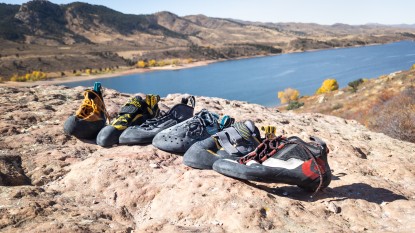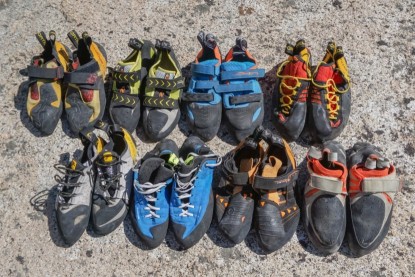Our Verdict
Compare to Similar Products
 This Product
Scarpa Drago | |||||
|---|---|---|---|---|---|
| Awards | |||||
| Price | $218.95 at Backcountry Compare at 3 sellers | $175.20 at Backcountry Compare at 3 sellers | $175.20 at Backcountry Compare at 3 sellers | Check Price at Backcountry Compare at 3 sellers | $128.95 at Amazon Compare at 3 sellers |
Overall Score  |
|||||
| Star Rating | |||||
| Bottom Line | These supple masterpieces are ready for miles of steep European limestone | An awesome shoe for long climbs requiring a variety of crack climbing and edging techniques | With this shoe, you can climb pitch after pitch without pain | A simple shoe with solid performance for trad climbing | A bargain price for a climbing shoe with respectable performance |
| Rating Categories | Scarpa Drago | La Sportiva Katana... | La Sportiva TC Pro | Black Diamond Aspect | La Sportiva Finale |
| Comfort (20%) | |||||
| Smearing (20%) | |||||
| Edging (20%) | |||||
| Pulling (20%) | |||||
| Cracks (20%) | |||||
| Specs | Scarpa Drago | La Sportiva Katana... | La Sportiva TC Pro | Black Diamond Aspect | La Sportiva Finale |
| Style | Velcro | Lace | Lace | Lace | Lace |
| Upper | Microsuede | Leather / Microfiber | Leather | Leather | Eco Leather / Microfiber |
| Width Options | Regular | Regular | Regular | Regular | Regular |
| Lining | Unlined | Pacific (in forefoot and back) | Sentex / PU Foam | Hemp | Unlined |
| Rubber Type | Vibram XS Grip2 | Vibram XS Edge | Vibram XS Edge | NeoFriction Force | Vibram XS Edge |
| Rubber Thickness | 3.5 mm | 4 mm | 4 mm | 4.3 mm | 5 mm |
Our Analysis and Test Results
The Scarpa Drago is one of the softest and most sensitive climbing shoes that we've tried. The only model that gives it a run for its money is the Scarpa Chimera. Both models offer outstanding performance and exceptional quality. The biggest difference is the closure system--velcro for the Drago and laces for the Chimera. The toebox of the Drago is also covered in sticky rubber for better grip during toe hooks. All in all, we believe the Drago is the better ultra-sensitive choice for bouldering, while the similarly sensitive Chimera provides some marginal advantages for sport climbing.
Performance Comparison
Comfort
Modern, high-end shoes are designed to perform well without pain, and the Drago is no exception. Right out of the box, we were able to wear these shoes for 30-meter pitches without any acute pain. The ultra-soft sole, however, did leave our feet a little more tired than usual.
They may appear narrow, but our wide-footed testers were pleasantly surprised when they pulled on these shoes, heard the customary “schlunk” of air rushing out of the shoe, and discovered a very comfortable, nearly perfect fit. On long, technical pitches, weak feet will suffer a little, but over time feet should strengthen and be able to handle longer and longer efforts.
These unlined, microsuede shoes will stretch, so don't be afraid to size down a half size from your regular Scarpa sizing to boost performance, especially if you'll mostly be bouldering. Our lead tester wears an EU 42 in most Scarpa shoes but felt like a 41 could be tolerable with the Drago.
Smearing
Did we mention these shoes are sensitive? The Drago is the closest thing we've worn to a rubber sock and and it allows you to paste your foot to any feature. You can feel every bump, divot, and ripple through the soft, 3.5mm of Vibram XS Grip 2 rubber. Sized tight for maximum performance, and these shoes are awesome for most styles of bouldering. We found the sensitivity to be the biggest advantage on slick plastic holds or glassy, polished rock.
The one caveat to keep in mind is that the extra sensitivity can translate into extra pain in some circumstances. Sharp holds or pointy rock crystals will feel noticeably more sharp and pointy when wearing these shoes. For many climbers, this disadvantage will be worth accepting due to the added confidence they will gain by being able to intimately feel more rock features.
Edging
Pure edging is one of this shoe's weaknesses. Its 3.5mm of Vibram XS Grip 2 rubber is grippy and incredibly sensitive, but the shoe itself lacks enough rigidity and support for micro holds. Some testers complained of these shoes flexing laterally and sliding off marginal edges. The ultra-soft midsole also supplies meager support for the rest of your foot, so slow, techy sequences can feel more tiring.
As far as shape goes, the broader toe feels like it offers less precision than some other pointer models. On steep, featured walls, we hardly noticed the lack of edging support, but our testers preferred a stiffer shoe on less-than-vertical granite. These observations, however, seem to be highly dependent on foot strength. Testers with weaker feet struggled to edge in these shoes, while those with stronger feet seemed to have fewer problems.
Pulling
These shoes are asymmetrical with a fairly blunt toe. Their sensitivity makes it easier to feel when your foot is placed perfectly on the edge of a shallow pocket, and the flexibility of the shoe allows you to pull into big pockets on steep walls. However, the broadness of the toe does limit how much of the shoe can sneak inside pockets and other small holds. Again, the lack of stiffness can make techy vertical limestone more taxing on the toes.
For other steep climbing styles, our testers praised the sticky rubber smeared across the upper forefoot for adding grip during heel-toe cams and toe hooks. Many of them also raved about the supple heel cup for the sensitivity it supplied for marginal heel hooks. All in all, these design features seem perfectly suited for steep climbing, and it performs exceptionally well on that kind of terrain.
Crack Climbing
The discerning crack ninja will take one look at the broad and tall toe profile of the Drago and look elsewhere. This high-volume toe box is comfortable, but not great for thin cracks. It's so blunt you just can't get much of it inside. A lower volume “skinnier” toe is better for slithering inside cracks and generating more grip from marginal jams.
The Drago isn't uncomfortable in wider cracks, and the rubber-covered upper even offers some enhanced grip and protection. However, high-top shoes with a flat sole are much better suited for hand-size and larger cracks. A further complaint is that the velcro closure strap can be excessively long depending on the size of your feet. When left with excess, this strap is prone to releasing while you place or remove the shoe from a crack. Nevertheless, if you're interested in these shoes for their sensitivity and steep climbing prowess, you probably shouldn't be using them for crack climbing.
Should You Buy the Scarpa Drago?
These sleek-looking race car shoes are a great choice for your next Euro limestone odyssey, where they will help you flow up steep limestone by day and let cheap wine flow down your satisfied gullet at night, along with snails or whatever. The going rate for a pair of Drago shoes is awfully steep. Why so expensive? They are handmade in Italy, and the glue job on the toe rubber is high quality, likely taking the time of a skilled cobbler who is (hopefully) paid fairly. A high cost is to be expected for any product that provides the highest performance in a certain area, such as the Drago's unmatched sensitivity.
What Other Rock Climbing Shoes Should You Consider?
If you decide to part with your hard-earned dough in exchange for the Scarpa Drago, you're getting an awesome, well-constructed product. All-American trad warriors, however, will probably be better off with a stiffer pair of climbing shoes for cracks or low-angle romps. The performance of the Drago is worth comparing against the similarly priced La Sportiva TC Pro, but trad climbers should also consider the more blue-collar Black Diamond Aspect as an excellent budget shoe.


